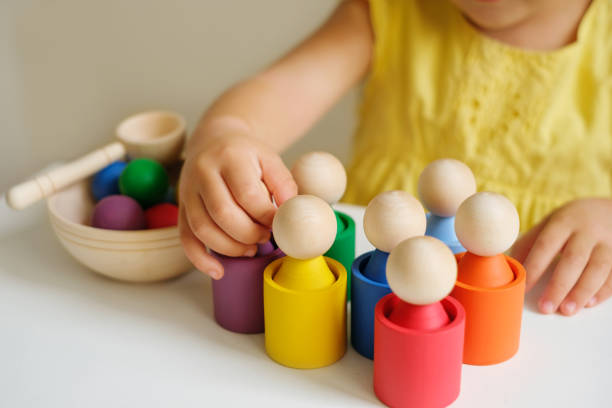Montessori and the Montessori Method
Who is Montessori?
The foundations of the Montessori Method emerged as a result of the work of Maria Montessori, who was the first female doctor in Italy and later continued her education in the fields of child health and psychiatry, in 1907.
How was the Montessori method born?
Maria Montessori first started to apply this method with the Children’s House project. It has been observed that the program has incredibly positive effects on the development of children. The superior success of the method on the development of children later gained great appreciation in other countries of the world, and the Montessori method quickly became widespread all over the world.
Today, Montessori is a common education system applied in pre-school and school periods in many countries.
What is the Montessori method and working environment like?
Emphasizing that the most important period in education is the first six years of life, Dr. Montessori states that children’s interests and education develop through various stages called “sensitive periods”. When fed at the right time and with the necessary warnings, every sensitive period can be turned into an opportunity that deeply affects the development of the child.
Montessori method
That every child is naturally intelligent; believes that reasoning and problem solving skills can be developed with the right stimuli at preschool ages.
The child is the architect of himself.
Rather than collective education at the same age level, it is based on an individual education scheme shaped specifically for each child in different age groupings. While young children take the example of adults, older children learn to help younger ones and have the opportunity to reinforce their knowledge while teaching them.
He argues that for learning to take place, there must be a balance between the subject to be learned and the learner’s readiness. Since children have the opportunity to choose the materials they will study in Montessori classrooms, they choose the materials they are interested in, need and are ready to learn. Children do the work they start with their own choices more fondly, they focus more on the materials they enjoy, and when they focus, their learning processes can be much more efficient.
Dr. Montessori believes that every child is unique. Individual education allows each child to learn at their own pace and to repeat as much as they need. Thus, every stage in learning is assimilated as needed.
While performing the work, children follow the order required to complete a process, and learn to pay attention to details. They develop the concepts of taking turns, sharing and responsibility.
In Montessori classrooms, there is a system called “ready environment”. Shelves are open, all materials are within reach of children. Since the materials are in open cabinets that children can reach, it is possible for the child to choose the material they want. Montessori materials are arranged in order of priority, from simple to complex. Each activity lays the foundation for the next. Children learn by logic, experimentation and repetition rather than memorization.
Freedom of choice supports children to be motivated by their own developmental needs and not by the teacher.
Children do not move on to the next stage without mastering one stage. Thus, the child does not feel a sense of failure.
Children are free to act, choose, repeat, express their feelings and socialize in a comfortable environment.
In the classrooms, there are tables and chairs that children can lift, as well as carpets for them to work on the floor when they want to work.
Simplicity is important in Montessori classrooms. There is no multi-colored, fantastic or messy arrangement on the walls or in the classroom that can distract the child’s attention. There is a format that is as simple and realistic as possible. The aim is to minimize external factors that may distract children and to allow the child to focus on the work and material.
While children have freedom of choice in the Montessori system, the system develops an internal discipline that can be adapted to life. There is one for each material. Thus, when the child wants to use that material, he waits for others to finish or offers to work together. This mechanism teaches children to be patient, to share, to take turns, and to respect the rights of others.
In Montessori programs, the leader is the child; The practitioner’s duty is to guide, be neutral, and assist.
In Montessori classrooms, children see that they progress towards better and perfect each time as they work with materials as long and repetitively as they need, and they work process-oriented, not result-oriented.
Finally, let’s share some details of Montessori materials:
Authenticity and naturalness are of great importance in a Montessori classroom. For this purpose, materials are mostly tools used in real life.
It is possible to think of Montessori materials as toys that children actually enjoy exploring or having fun making. Each material has primary and secondary purposes that contribute to the child’s development. That’s why Montessori uses materials instead of toys to distinguish his work from aimless games and toys; uses the words work instead of play.
The materials have their own error checks. Children correct their own mistakes instead of warnings from their teachers. On the one hand, it improves their problem-solving abilities; on the one hand, they reinforce their self-confidence by learning to be self-sufficient.
